Boerhavia coccinea, Scarlet Spiderling
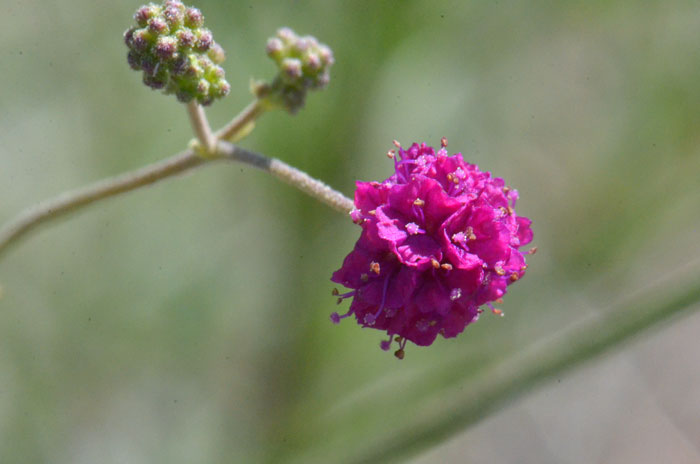
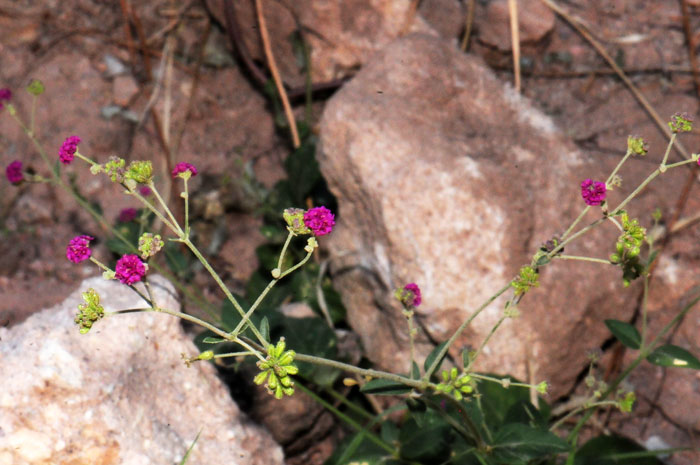
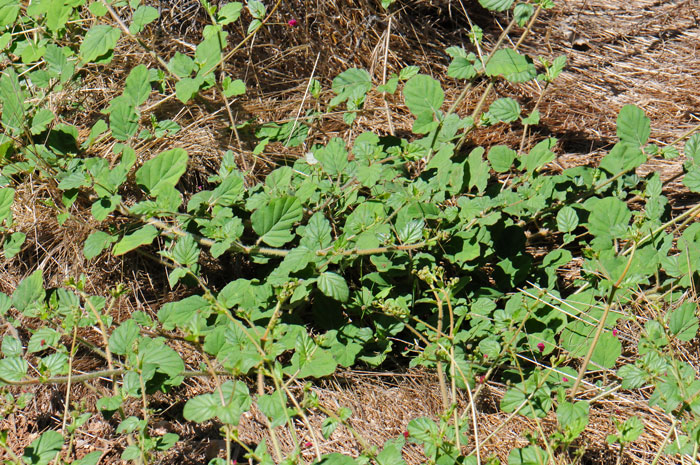
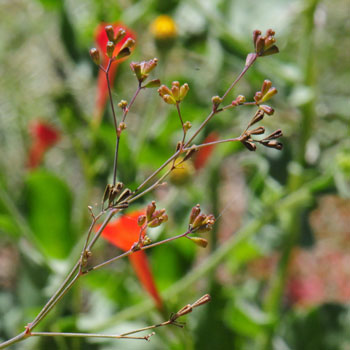
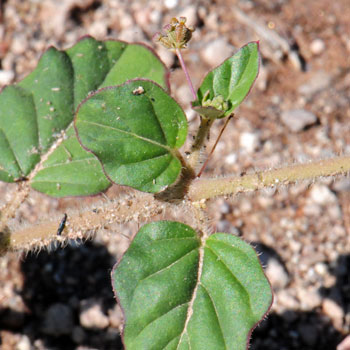
Scientific Name: Boerhavia coccinea
Common Name: Scarlet Spiderling
Also Called: Red Spiderling, (Spanish: Hierba del Cancer, Hierba de la Hormiga, Juaninipili, Mochi)
Family: Nyctaginaceae, Four O’clock Family
Synonyms: (Boerhavia caribaea, Boerhavia grahamii, Boerhavia sarmentosa, Commicarpus scandens)
Status: Native
Duration: Perennial
Size: Up to 3 feet or more.
Growth Form: Forb/herb; often woody at the base, stems prostrate or sprawling, multiple branches throughout.
Leaves: Green; leaves variable in size and shape, broadly ovate or lanceolate, basal leaves much larger, outer leaves smaller, large leaves with petioles, leaf margins wavy (sinuate).
Flower Color: Red-violet, magenta, maroon or pink; flowers a "head" in clusters up to 5, flowers terminal or from leaf axils, flowering stems without sticky bands, fruit hairy with rounded tips, smooth between the ribs.
Flowering Season: April to November or year-round in Arizona, California and Texas.
Elevation: Up to 7,000 feet but usually lower, below 3,000 feet in California.
Habitat Preferences: Common along roadsides, disturbed areas and in fields, upper beaches in California.
Recorded Range: Scarlet Spiderling is found primarily in the southern United States in; AZ, CA, FL, MD, NC, NM, TX, VA and also HI. It is also native to Mexico, Central America, South America and the West Indies and is found in Australia.
North America & US County Distribution Map for Boerhavia coccinea.
U.S. Weed Information: No information available.
Invasive/Noxious Weed Information: No information available.
Wetland Indicator: No information available.
Threatened/Endangered Information: No information available.
The Plant List includes 243 scientific plant names of species rank for the genus Boerhavia. Of these 105 are accepted species names.
Comments: As with many members of Boerhavia, Scarlet Spiderling has a sticky viscid herbage but not throughout the plant.
Also see in Southwest Desert Flora Coulter's Spiderling, Boerhavia coulteri, Fivewing Spiderling, Boerhavia intermedia, Climbing Wartclub, Boerhavia scandens and Largebract Spiderling, Boerhavia wrightii.

